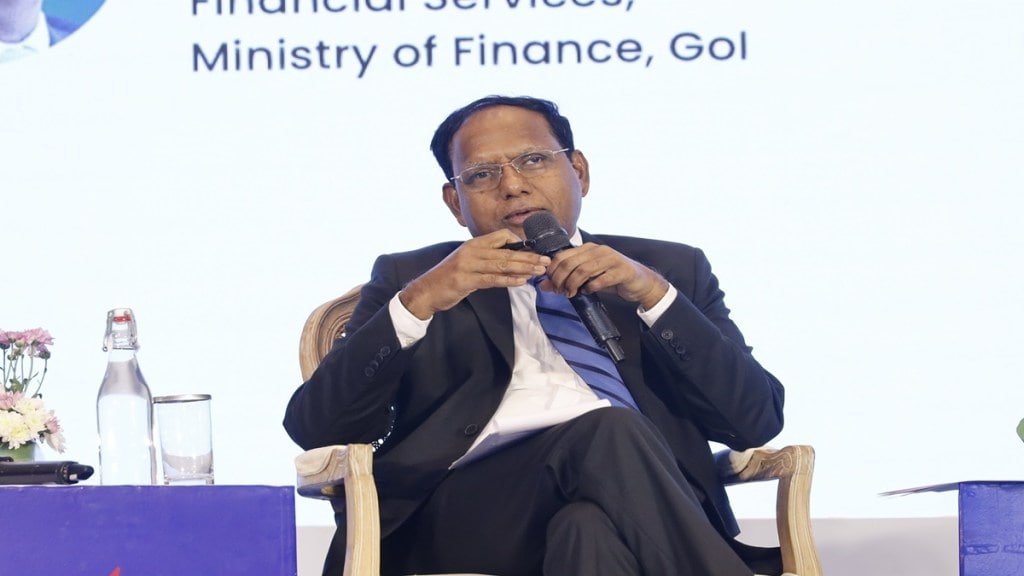Q: Re-imagining deposits is easier said than done, as savers always want higher returns. Do you think there is room for tax breaks on deposits?
This has been a long-standing demand of the bankers. If you look at the western banking models, deposits are not the key factor for growth. Banks there raise funds through different methods and then lend. They can raise billions of dollars in a day due to the strength of their balance sheets, and also the trust they command. Similarly, Indian banks should raise funds from the market at very competitive rates.
Q: But to lend, banks need a strong deposit base..
Banks can mobilise funds via bonds, such as the infrastructure bonds some of them have issued in recent years. We had plans for bond issuance this year too, but that didn’t happen. We still have such plans.
Q: Rather than their core operations, banks make money from the treasury route. Deposit growth looks constrained, as retail investors prefer stock markets. Large corporate houses are also increasingly less reliant on bank loans. How are banks going to expand credit in this scenario?
We can’t divide the banking operations into boxes. As long as the banks are able to receive deposits and pay back, and make profits, the model can’t be faulted. Private sector banks’ lending is mostly for retail, cars, homes, and temporary loans. However, public sector banks also lend to the infrastructure segment. PSBs do a lot of corporate lending as they are committed to financial inclusion and fund a large number of (government) schemes. Despite that, PSBs’ books are growing and they are making profits. As long as the profits are there, the investor should be happy.
Q: But banks have become risk-averse and are reluctant to lend to relatively lower rated companies; even their loans to NBFCs have contracted recently…
Credit growth is a little slower in the current quarter, but we want it to pick up. If you look at the corporate profits last year, many of the big corporations have huge cash flows. So they are not actually seeking loans.
We want MSME lending to go up. We have credit guarantees for the MSME lending. We are also coming up with some more schemes for the MSMEs, basically increasing the limit of lending from Rs 2 crore to Rs 10 crore. The digital footprint-based lending has also been launched. PSBs have sanctioned a huge number of loans to the MSME sector in the last 3-4 months. The gross NPAs and the net NPAs of PSBs have declined continuously. Credit also depends on how the demand picks up.
Q: Unified Lending Interface (ULI) has not taken off..
In the last month, I have chaired two meetings on this, one with all the chief secretaries and all the central government departments, and the other with banks, fintechs and the RBI. I am now confident that with the number of data sets we have in place for ULI, it will pick up.
Q: Banks incur big losses in UPI transactions. The government doesn’t want to put a charge on UPI transactions so that the banks can make some money…
Banks can’t be expected to make profits in all operations. This is true for conglomerates too. After banks were given the UPI facility, their number of customers has really shot up, and this has accelerated credit growth.
Q: But Gen Z customers don’t do any credit transactions…
That may be the case only in large metros. The Jan Dhan accounts that use UPI are largely potential borrowers. One of the key reasons for the high economic growth in recent years was the formalisation of the economy, and UPI has played a great role in that. If the banks want to make money from every transaction, I think it is a bad banking philosophy.
For acquiring a customer, banks may need to spend. It may not be the right strategy for them to expect profits as they acquire customers through UPI.
Q: The landscape has changed in the way companies are borrowing and customers are saving. Is this the beginning of a structural change in which banks will lose business?
This dis-intermediation is happening faster than we thought. If you look at it dispassionately, it is good for the citizens. Dis-intermediation, fintechs and NBFCs are all helping financial inclusion, at a much higher rate than in the past. It’s not structural at this point of time.
Q: Regional rural banks have been merged, with each state having only one. What is the way forward?
We have consolidated RRBs since May 1, and have only 28 of them now . Technology-wise, we will integrate them by September, and most RRBs now actually are profitable. We want RRBs to be very vibrant local institutions providing access to credit as well as deposits to the rural population. Some RRBs are very big. In fact, UP Grameen Bank, Rajasthan Grameen Bank, Andhra Pradesh Grameen Bank and Gujarat Grameen Bank are as big as some of the small finance banks. We want to strengthen them, and will take a look at what we have to do with them once this goal is achieved.
Q: What are your thoughts on the merger of state-run general insurance companies?
There’s a proposal for this in the Insurance Bill.
Q: The Insurance Bill that seeks to increase FDI from 74% to 100% is not listed in the current Parliament session..
I think in the next Parliament session, it will come. We are hopeful.
Q: Is the government in favour of giving big corporate houses bank licences?
The policy is already laid down, so there is no proposal at this point of time to review it.


